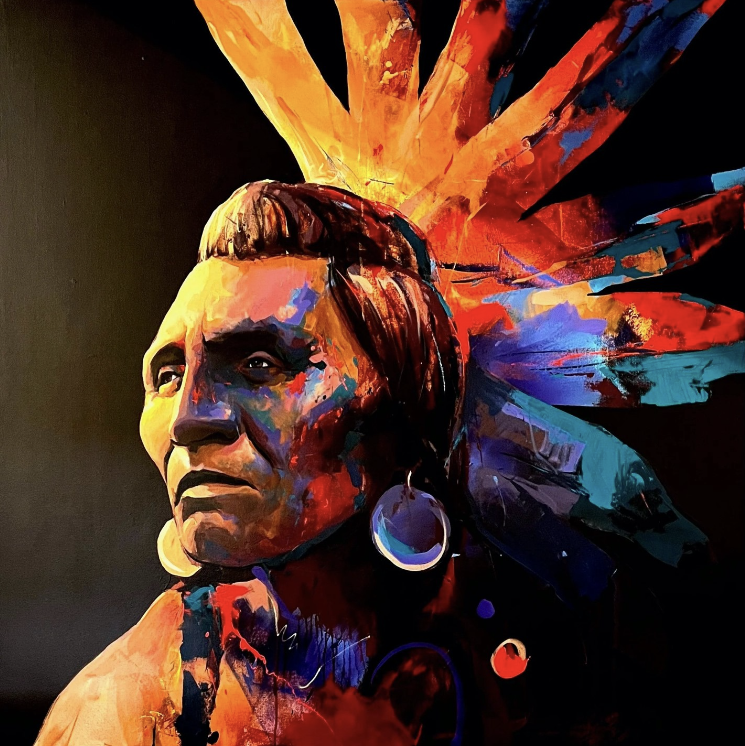In the heart of New Mexico’s Navajo reservation, where running water remains a luxury, Jeremy Salazar’s artistic journey began. Today, his vibrant portraits and abstract works not only preserve Indigenous stories but actively support the communities that inspire them.
Salazar, who grew up in the Eastern Agency area between Cuba and Farmington, has transformed from a young boy who chased and trained wild horses to an influential artist and community leader. “We as Native peoples know our own stories best, the ones who lived it, the storytellers,” says Salazar, whose work gives voice to generations of Native Americans.
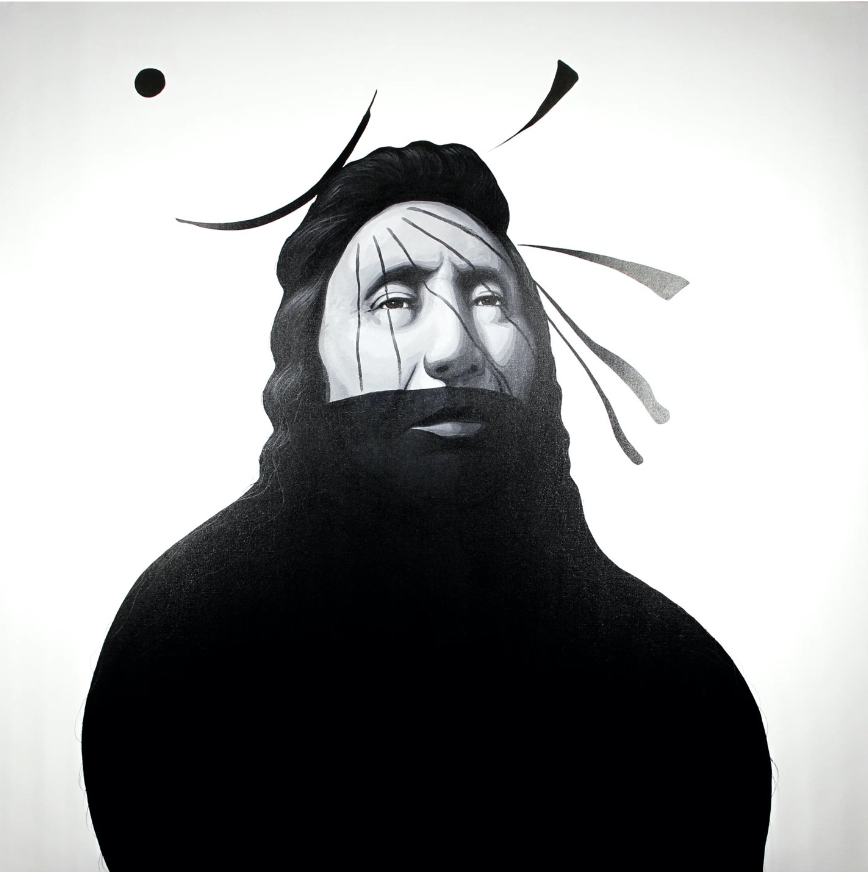 His artistic career emerged unexpectedly in 2016 when his wife was expecting their daughter. Within a year, Salazar made the bold decision to leave his welding career in South Dakota’s oil fields to pursue art full-time, prioritizing both his creative passion and family life.
His artistic career emerged unexpectedly in 2016 when his wife was expecting their daughter. Within a year, Salazar made the bold decision to leave his welding career in South Dakota’s oil fields to pursue art full-time, prioritizing both his creative passion and family life.
“There is a lot of Native art by non-Native artists,” Salazar notes. “There are not too many Native artists painting about their culture. I wanted my work to be fresh, different, and suited to up-and-coming collectors.”
Salazar’s technique has evolved dramatically over six years of dedicated practice. He now paints portraits directly onto canvas without preliminary sketches, working in both minimalist monochromatic tones and explosive color palettes. His subjects are carefully chosen – individuals whose weathered faces could belong to the 1800s, whether they’re Dine, Ute, or Crow. Through meticulous attention to facial expressions, particularly the eyes, Salazar captures not just physical likenesses but the spirit and dignity of his subjects.
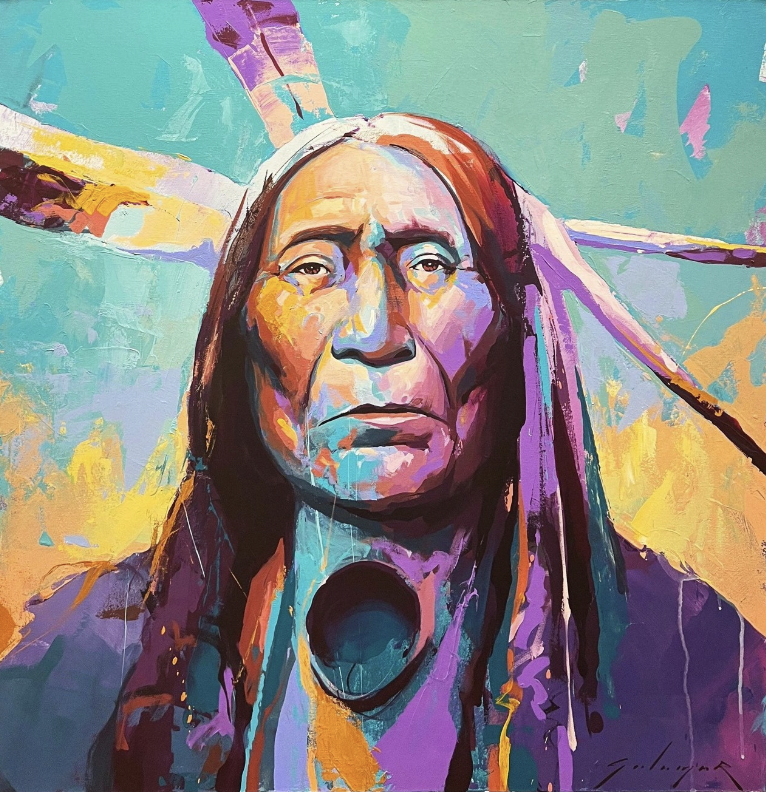 His commitment to preserving history extends beyond his canvases. Salazar carries his supplies in a 1920s leather doctor’s bag and collects artifacts like wagon wheels from the original Camino Real, tangible connections to the past he works to preserve.
His commitment to preserving history extends beyond his canvases. Salazar carries his supplies in a 1920s leather doctor’s bag and collects artifacts like wagon wheels from the original Camino Real, tangible connections to the past he works to preserve.
When COVID-19 devastated reservation communities, Salazar demonstrated remarkable leadership. Rather than retreating, he transformed his old horse-training barn into a modern barndominium, employing 23 community members during construction. The project provided critical employment while creating a space where his son could experience the same connection to the land that shaped Salazar’s childhood.
Through his Wise Program, Salazar serves as an ambassador for his community, coordinating with General Mills to deliver essential water supplies via tractor-trailers. He also organizes the collection and distribution of firewood, insulation, stoves, and other necessities for reservation residents.
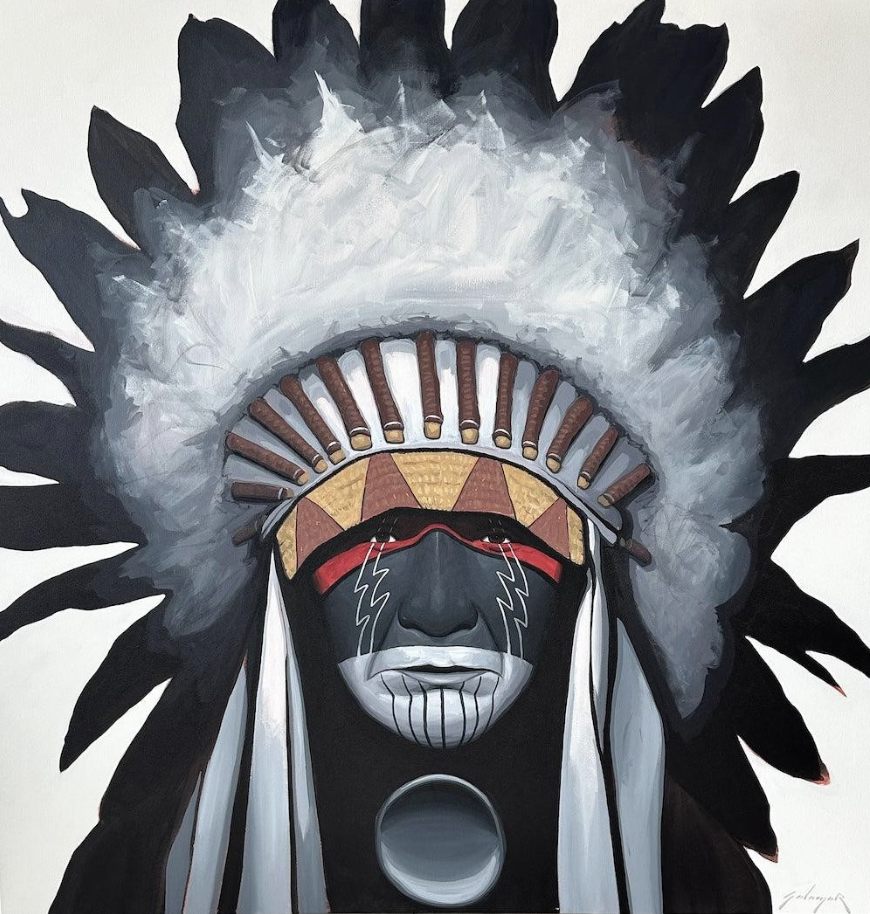 “We are the forgotten ones,” Salazar says of his reservation community. Yet through his art and activism, he ensures their stories endure. His paintings serve as visual narratives, preserving the faces and spirits of people whose memories might otherwise fade into history books and legends.
“We are the forgotten ones,” Salazar says of his reservation community. Yet through his art and activism, he ensures their stories endure. His paintings serve as visual narratives, preserving the faces and spirits of people whose memories might otherwise fade into history books and legends.
Working closely with various tribes, Salazar gathers stories and transforms them into striking visual narratives. His artistic process combines bold abstraction with careful realism, creating works that resonate with both traditional and contemporary audiences. “I see my work as an ongoing blessing,” he reflects, “connecting me and my art with the gallery, with collectors, and with my community.”
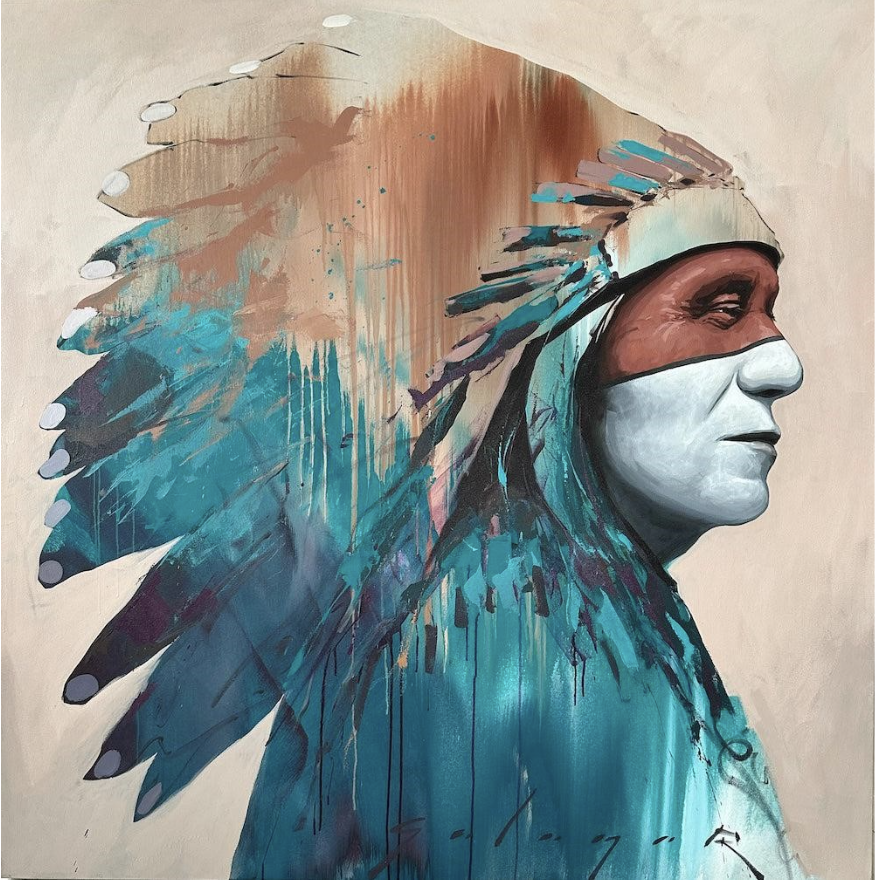 For those collecting contemporary Native American art, Salazar’s work represents more than just striking imagery – it embodies the authentic voice of Indigenous experience, the preservation of cultural heritage, and the power of art to create positive change. His dedication to both artistic excellence and community service marks him as a rising force in the Native American art world, one whose influence extends far beyond the gallery walls.
For those collecting contemporary Native American art, Salazar’s work represents more than just striking imagery – it embodies the authentic voice of Indigenous experience, the preservation of cultural heritage, and the power of art to create positive change. His dedication to both artistic excellence and community service marks him as a rising force in the Native American art world, one whose influence extends far beyond the gallery walls.
_______________________________
Author’s Bio:
Shanan Campbell is passionate about art – those who make it and those who collect it. She believes everyone deserves meaningful and brilliantly curated art for their home, office, yacht, or vacation retreat. For more than two decades, she has been the driving force behind Sorrel Sky Gallery, Durango, established in 2002 to provide personalized client services, maintain a progressive business model, and develop meaningful connections between the artists it represents and the clients it serves. Shanan opened Sorrel Sky, Santa Fe, in 2014 and Sorrel Sky, New York City, in 2024. She continues to pursue artists who have long inspired her, including them in the success and forward momentum of Sorrel Sky.
For more information about Jeremy Salazar: https://sorrelsky.com/collections/jeremy-salazar
All images are courtesy of Jeremy Salazar for Sorrel Sky Gallery.

